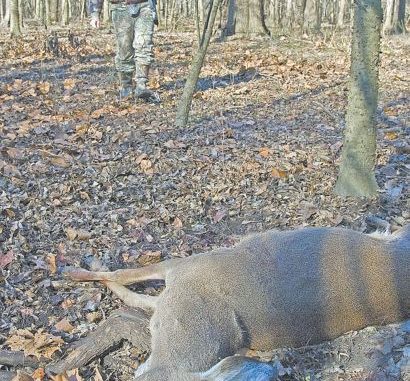
Many hunters claim they would like to kill trophies, while at the same time making hunting all about the numbers. What these hunters don’t understand is that quality deer require time to develop, and that means sacrifices have to be made.
“It’s not going to happen overnight,” Greg Hackney said. “It’s going to take three to four years before you’ll see a significant difference.”
That’s exactly how the deer herd developed on the Washington County property Hackney hunts.
“The club began in 1985, and we immediately got on the program of shooting does,” said Paul Wiggins, one of the original member/owners of the property. “The people who had the land before us ran dogs, and would shoot a few does and any buck they saw.”
Hunting those first few years after Wiggins and his buddies took over the property didn’t produce many bucks, but then the herd finally made a turn.
“It took somewhere between three and five years to whittle down the does and let the bucks come on up (in numbers),” he said. “In less than five years, you noticed a marked change.”
Since that point, club members have enforced an antler requirement calling for at least 8 points and 18-inch beam length, and the club’s wall is now lined with the fruits of those first few years.
“That’s the deal with management: The first few years, you don’t kill much but then after a few years you can kill a lot of deer,” Hackney said. “After a few years of management, you’ll have more does, you’ll have bigger bucks and healthier deer.
“It’s fun.”
The other big advantage of an aggressive doe-shooting plan up front is that the deer herd begins to balance out. Hackney said the 24 years of management on this piece of property has resulted in a herd that is almost a 1:1 buck/doe ratio.
And that has huge benefits for hunters.
“When there are too many does, the bucks breed at night,” Hackney said. “They’re that ghost deer that everyone sees driving in at night. But when the herd is balanced, the bucks have to move because there’s more competition out there for the does.”
The competition for does has gotten so stiff on Hackney’s club that bucks have actually torn their antlers up fighting.
“I don’t want to see the buck ratio get any higher now because it puts a lot more stress on the bucks,” he said.
Wiggins said that reaching the point where having too many bucks is a realistic concern required more than just a one-dimensional dedication to a specific plan.
“We try to maintain some flexibility while keeping some standards,” he explained. “What we’re dealing with is not an exact science; you have to tweak it.
“Things out there in nature don’t stay the same.”
That willingness to change is an important part of any management plan, Anderson-Tully Lumber Company biologist Mike Staten said.
“For instance, last year we had a tremendous flood (along the Mississippi River); it was the third-highest river level on record,” Staten said. “We had a terrible fawn crop.”
Flexible management would allow clubs affected by these floodwaters to make adjustments to account for the smaller number of new deer moving into their herds, and Staten said Anderson-Tully lessees were asked to reduce the number of does they shot.
“I recommended they take a few less does last season,” he said. “It’s a whole lot easier to take a few more (does) next year than to put them back.”
Clubs that refuse to change their rules and continue to shoot consistent numbers of does when fawn numbers are down can hurt themselves down the road.
“The fawn crop is the key — you can’t kill deer if you don’t produce them,” Staten said.


